XXXX
Problematize the inner mystical experience
Painting as a mediating practice and a space organizer
Scale and spatial perceptions as EDIFYING DRAMATC CORRELATES
Heart as an organizing entity and demiurge of experiences
Tragedy of language VS the authority of the poetic
Deconstruction of UNIVOCAL PERCEPTION
De-HIERARCHIZED & DYNAMIZED ONE
Currently, I investigate the relationship between painting, architecture and spirituality from western spatial organization in religious representations systems such as icons, altarpieces, iconostasis, among others.
During the residency I am interested in using time and space and the supportive environment with colleagues to continue my research on devotional groups of images and spaces delving into an iconographic and formal deconstruction. Given their centrality in the history of Western art and their narrative and affective strength I wish to problematize contemporary spirituality images based on an anthropocentric, individualized character subjugated to spectacle.
The growth of dogmatic and fanatical perspectives in the religiosity of the present century, based on entertainment and affective co-optation led me to think about the possibilities offered by art to foster a de-hierarchized spirituality. I intend to investigate a metaphysical art free of ominous imagery through images and procedures that promote a reciprocal animistic perspectivism that allows our fractal society other models of spiritual identification linked to dynamism and mutability.
FAITH
MYSTICISM
PAST TIMES
PERSPECTIVA ANIMISTA
SCALE & SPACIAL PERCEPTIONS AS EDIFYING DRAMATIC CORRELATES
¿CONTEMPORARY ANTHROPOCENTRIC SPIRITUALITY?
HEART AS AN ORGANIZING ENTITY (organizador de las experiencias)
TRAGEDY OF LANGUAGE VS THE AUTHORITY OF THE POETIC
THE END OF UNIVOCAL, UNAMBIGUOS PERCEPTION
REPLACED BY A DEHIERARCHIZED AND DYNAMIZED ONE
PAINTING + ARCHITECTURE + SPIRITUALITY
ICONS +
ALTARPIECES +
ICONOSTASIS +
DEVOTIONAL IMAGES
ICONOGRAPHIC AND FORMAL DECONSTRUCTION
carácter antropocéntrico, individualizado y subyugado al espectáculo.
1/ ARTS / IMAGES FOSTERING THE POSSIBILITY A DE-HIERARCHIZED SPIRITUALITY FREE OF OMINOUS IMAGINERY AND PROCEDURES
2/ ARTS / IMAGES PROMOTING A RECIPROCAL ANIMISTIC PERSPECTIVISM ALLOWING OUR FRACTAL SOCIETY OTHER MODELS OF SPIRITUAL IDENTIFICATIONS RELATED TO DYNAMISM AND MUTABILITY
Que se da o se dirige a otro y que a su vez se recibe de este en la misma medida.
Afectividad mutua animista
WATER
La chiromancienne
THE PALMIST / CHIROPRACTOR
QUIROMANCIA:
Adivinación de lo concerniente a una persona por las rayas de sus manos
RECIPROCO según Linguística significa Que denota una acción que es intercambiada entre dos o más sujetos y que recae sobre todos ellos
RECIPROCAL according to Linguistics means denoting an action that is exchanged between two or more subjects and that falls on all of them.
PIERRE KLOSSOWSKI + CHIROMANCY +
HANDS AND ARMS
L'hermaphrodite des Alpes, 1981. Lápices de colores, 109 x 159 cm. Colección particular, Milán.
al principio me impresionó algo concreto e inexplicable como es la visión persistente de un gesto......Por un lado, el dilema abarca el espacio mental de la escena descrita, del diálogo, del argumento -en el que la modelo repudia la identidad del retrato, de su fisonomía y de la interpretación que las apariencias dan a su gesto, tal como se revela en esto; y por otro, el espacio corporal (el espacio de la estatuaria y su proyección pictórica), la escena pintada, que reproduce el gesto interpretable en su obstinado silencio, sugiriendo otros gestos posibles y contradictorios. De ahí la teatralidad de mis composiciones: una pantomima de espíritus..... La preponderancia de temas eróticos no es un fenómeno exclusivamente francés, sino que denota una predilección que induce a la sensibilidad.
Cross ecosomatic perspectives that allow to think through gestures and not over bodies as if they were neutral defined objects.
Joanne Clevel, Isabelle Girot, Marie Bardet
Una] perspectiva ecosomática remite a una propuesta de contramodelo de cuerpo queapunte a dar cuenta de los vínculos entre medio ambiente,“cuerpo’” y“mente”, modelizado tanto a partir del campo de la ecología científica como de las humanidadesmedioambientales. Remite a la necesidad de percibirse en reciprocidad dinámica ycontinua con el medio, visto a su vez como ecosistema, es decir, como un ámbito en el quese comparte un común cotidiano con otros seres vivientes. No buscamos así construir unanueva doctrina, sino enunciar una situación singular, desde la cual practicantes, artistas,investigadores, activistas y estudiantes piensan, sienten y actúan. Hablar de ecosomáticahoy es interrogarse por los alcances políticos de las prácticas somáticas, por las relacionesentre humanos y no-humanos que estas son capaces de inventar y por las estrategias deresistencia a las hiperlógicas mercantiles y financieras basadas en el extractivismo y laexplotación de los recursos limitados del planeta
Si bien es claro que hay que observar cada cultura como una individualidad, es preciso reconocer que una sociedad que posee la tracción animal o el molino de viento realiza uncierto “progreso” sobre una cultura que está todavía en el nivel de las armas delanzamiento simple y solo tiene por motor al hombre. Se puede decir que el potencial de acción de dicha sociedad sobre la naturaleza es más grande.Sin embargo, ese “progreso” que la primera sociedad marca sobre la segunda no podríaser considerado en términos absolutos. Este aumento del potencial de energía deberá ser examinado en función del contexto general, es decir del contexto ecológico que proporciona las “oportunidades” de satisfacer cierta cantidad de “necesidades” según las técnicas presentes. Todos estos elementos están en reciprocidad de perspectiva.
André Audricurt
Haudricourt habilita perspectivas para observar relaciones entre elementos –antes que cada elemento –, la acción humana en continuidad con sus cuerpos, sus herramientas y sus instituciones. Insiste en la importancia de concebir la reciprocidad de esas relaciones
En la perspectiva ecosomática, subrayamos: En este comienzo del siglo XXI, los pensamientos ecológicos producidos por las humanidades medioambientales insisten sobre esta construcción histórica situada culturalmente; no omiten ni la materialidad del mundo– los ríos, las montañas, los ecosistemas autónomos– ni nuestros tecno-medio ambientes contaminados en los cualesreina una tiranía mortífera. Esta materialidad “de las naturalezas” es también la reivindicación principal de numerosas corrientes feministas actuales, las cuales producen, a su manera, una visión transversal de la cuestión de los cuerpos y de los territorios proporcionando análisis conjuntos de su explotación, del “extractivismo” y de las violencias que sufren.
La perspectiva esbozada por ese montaje de Mauss puede acentuar una renovación del materialismo, así como la atribución de cierta extensión al alma en la correspondencia de Descartes con Elisabeth de Bohemia trazaba una línea para torcer al interior del cartesianismo una brecha por la cual se derrama una serie no dual. En esa rajadura podemos reconocer y construir más escapes de la aún muy pregnante perspectiva dualista alma/cuerpo que todavía habita muchos espacios y momentos, y modos de pensar-hacer.
Esa continuidad material-inmaterial que escapa a la oposición binaria y preserva las diferencias refuerza lo que Mauss describe como una “corriente de doble sentido”. Karsenti subraya: “el ensayo ‘Las técnicas del cuerpo’ representa una tendencia profunda de su pensamiento: es cierto que se rehúsa a conferir el primer impulso del proceso al orden material del cuerpo, pero busca concebir, efectivamente, no un ‘vertimiento unívoco de lo social’ en lo material, sino una corriente en doble sentido”.
Ese doble sentido, esa corriente recíproca entre aspectos materiales e inmateriales de la vida, esa manera de abrazar en un mismo movimiento los objetos técnicos y las instituciones, inauguran un materialismo de los gestos.
Sigue Karsenti:Sin minimizar la importancia de la morfología de la pierna para un estudio de la caminata, tal vez podríamos sacar más ventajas del análisis de los movimientos efectuados. Según Mauss, podríamos observar “el habitus del cuerpo parado caminando, la respiración, e lritmo, el balanceo de los puños, de los codos, la progresión del tronco hacia adelante delcuerpo (o no), el avance de ambos lados del cuerpo alternativamente, el caminar los pies para afuera o para adentro…” ¿Apoyamos el pie punta talón o talón punta? Cual es la posición de los dedos del pie?
Surge la necesidad de empezar a de-escribir en serie, en esta casilla incómoda de lo diverso de las “técnicas corporales”, amontonando estrato tras estrato, la respiración, el mover el tronco hacia adelante, el ritmo, entablar el apoyo con adelante o con atrás, ladinámica gravitatoria, modos de orientarse lateral y frontalmente, etcétera. Una serie de y… y… y…; un corpus –serie – que itera un poco diferente cada vez, más que un corpus –“el cuerpo”– que circunscribe para definir; por fin, algo de la materialidad del cuerpo tal vez, pero entendido más en relación que “objetualmente”. No hablar de“el cuerpo” o estudiar “el cuerpo” como un objeto, sino como series de gestos, como relaciones, gestos como materiales e inmateriales, gestos humanos pero no solamente, de la biósfera toda. Abordar las condiciones materiales como lo que se teje desde gestos, entre gestos, reconociendo la importancia de efectuar montajes heterogéneos, en la relación como relación de reciprocidad, permite abrir pistas para un materialismo no unilineal (causa-efecto) sino con múltiples efectos recíprocos.
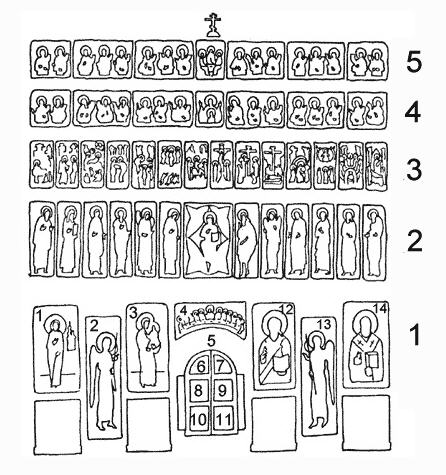

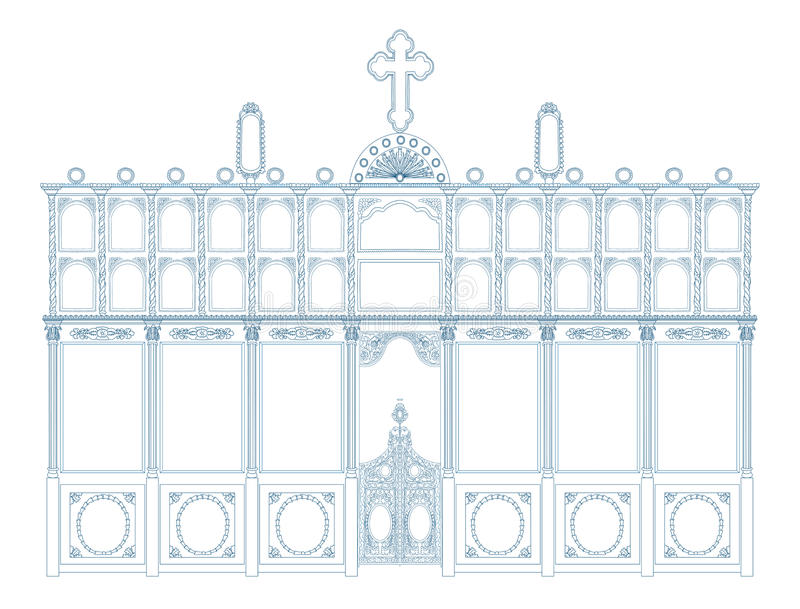
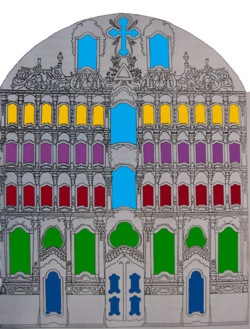
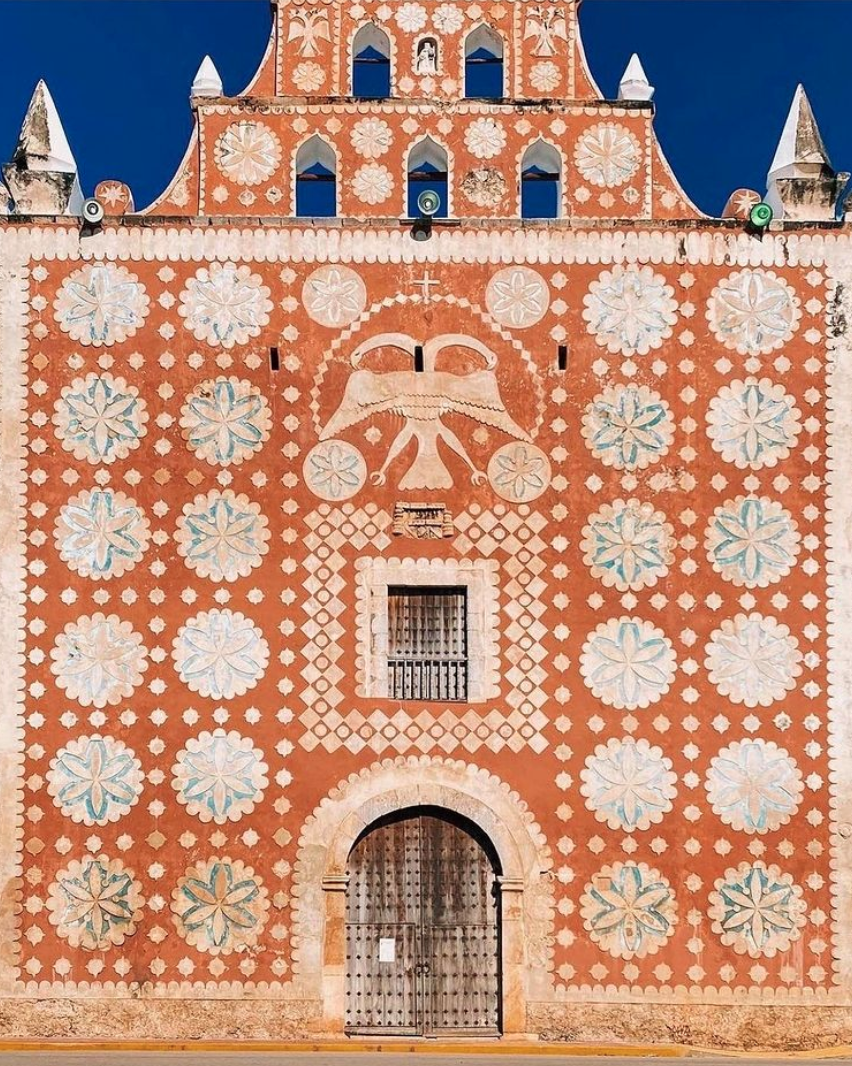
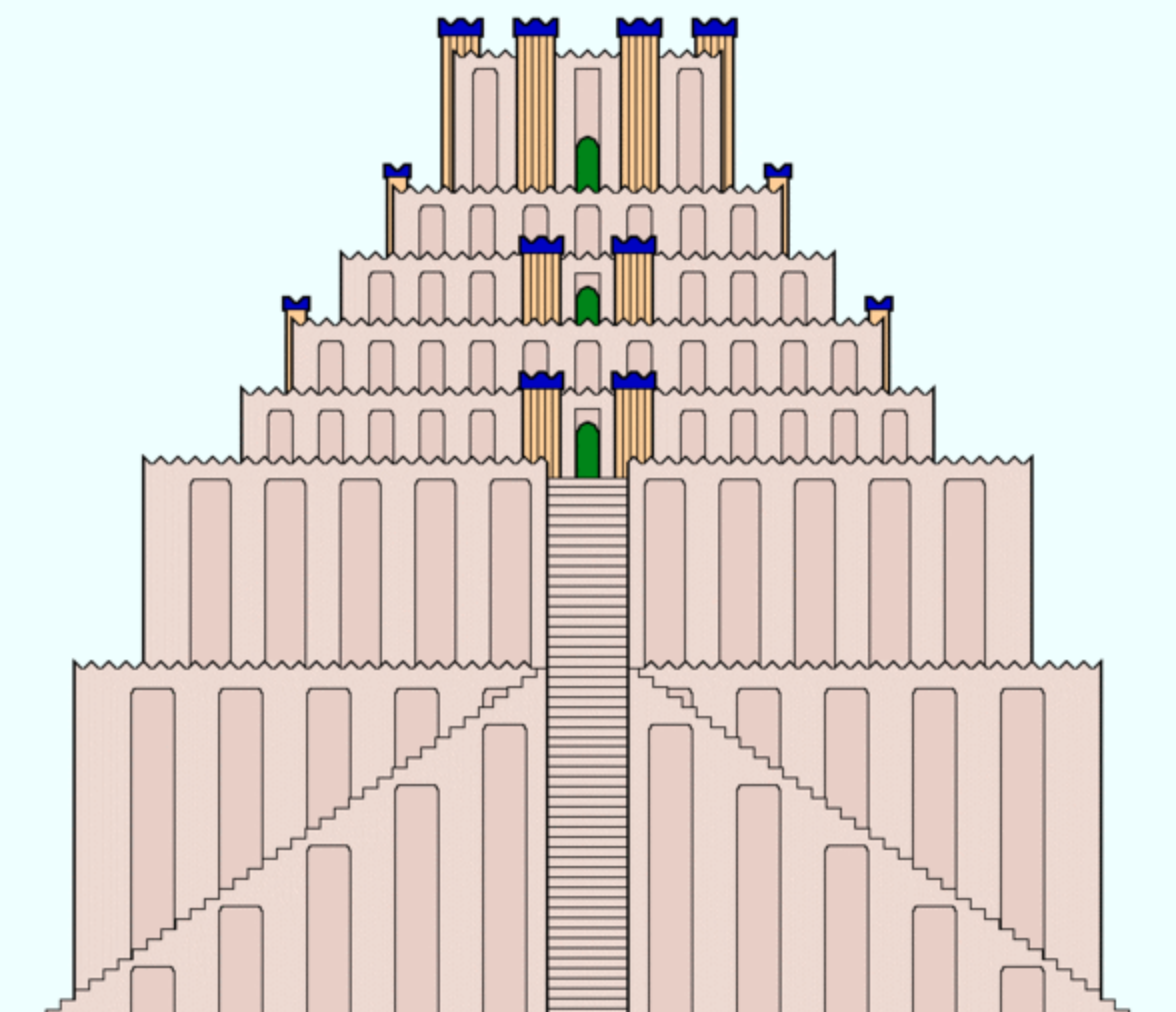
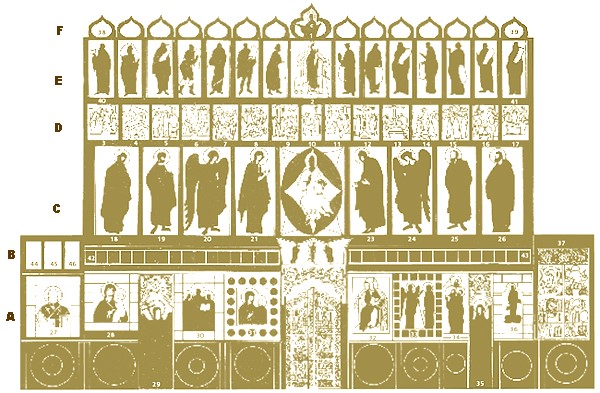
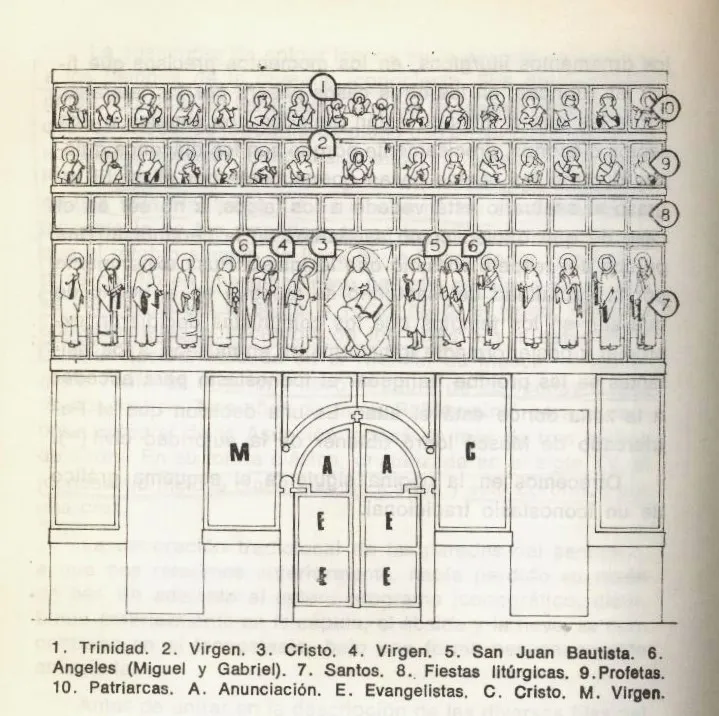
BODIES OF WATER
Feminist post-human figuration
To experience concepts bodily is the materiality of philosofy. Bodies as sensory aparatus must stetch or contract in order to really access the materiality the concepts or a theory proposes to us.
In order to account for the ways in which a watery perspetive torques and twists our understanding of embodiment we need a different kind of phenomenology not theone that we learned about tha comes out from mid 20th century philosophy but rather one that cand divest itself from some of the implied and explicit humanist principles oh which phenomenology rests.
Éxodo 14:21-22
21 Y extendió Moisés su mano sobre el mar, e hizo Jehová que el mar se retirase por recio viento oriental toda aquella noche; y volvió el mar en seco, y las aguas quedaron divididas. 22 Entonces los hijos de Israel entraron por en medio del mar, en seco, teniendo las aguas como muro a su derecha y a su izquierda.
Completo:
Los israelitas cruzan el Mar Rojo
14 Habló Jehová a Moisés, diciendo: 2 Di a los hijos de Israel que den la vuelta y acampen delante de Pi-hahirot, entre Migdol y el mar hacia Baal-zefón; delante de él acamparéis junto al mar. 3 Porque Faraón dirá de los hijos de Israel: Encerrados están en la tierra, el desierto los ha encerrado. 4 Y yo endureceré el corazón de Faraón para que los siga; y seré glorificado en Faraón y en todo su ejército, y sabrán los egipcios que yo soy Jehová. Y ellos lo hicieron así.
5 Y fue dado aviso al rey de Egipto, que el pueblo huía; y el corazón de Faraón y de sus siervos se volvió contra el pueblo, y dijeron: ¿Cómo hemos hecho esto de haber dejado ir a Israel, para que no nos sirva? 6 Y unció su carro, y tomó consigo su pueblo; 7 y tomó seiscientos carros escogidos, y todos los carros de Egipto, y los capitanes sobre ellos. 8 Y endureció Jehová el corazón de Faraón rey de Egipto, y él siguió a los hijos de Israel; pero los hijos de Israel habían salido con mano poderosa. 9 Siguiéndolos, pues, los egipcios, con toda la caballería y carros de Faraón, su gente de a caballo, y todo su ejército, los alcanzaron acampados junto al mar, al lado de Pi-hahirot, delante de Baal-zefón.
10 Y cuando Faraón se hubo acercado, los hijos de Israel alzaron sus ojos, y he aquí que los egipcios venían tras ellos; por lo que los hijos de Israel temieron en gran manera, y clamaron a Jehová. 11 Y dijeron a Moisés: ¿No había sepulcros en Egipto, que nos has sacado para que muramos en el desierto? ¿Por qué has hecho así con nosotros, que nos has sacado de Egipto? 12 ¿No es esto lo que te hablamos en Egipto, diciendo: Déjanos servir a los egipcios? Porque mejor nos fuera servir a los egipcios, que morir nosotros en el desierto. 13 Y Moisés dijo al pueblo: No temáis; estad firmes, y ved la salvación que Jehová hará hoy con vosotros; porque los egipcios que hoy habéis visto, nunca más para siempre los veréis. 14 Jehová peleará por vosotros, y vosotros estaréis tranquilos. 15 Entonces Jehová dijo a Moisés: ¿Por qué clamas a mí? Di a los hijos de Israel que marchen. 16 Y tú alza tu vara, y extiende tu mano sobre el mar, y divídelo, y entren los hijos de Israel por en medio del mar, en seco. 17 Y he aquí, yo endureceré el corazón de los egipcios para que los sigan; y yo me glorificaré en Faraón y en todo su ejército, en sus carros y en su caballería; 18 y sabrán los egipcios que yo soy Jehová, cuando me glorifique en Faraón, en sus carros y en su gente de a caballo.
19 Y el ángel de Dios que iba delante del campamento de Israel, se apartó e iba en pos de ellos; y asimismo la columna de nube que iba delante de ellos se apartó y se puso a sus espaldas, 20 e iba entre el campamento de los egipcios y el campamento de Israel; y era nube y tinieblas para aquellos, y alumbraba a Israel de noche, y en toda aquella noche nunca se acercaron los unos a los otros.
21 Y extendió Moisés su mano sobre el mar, e hizo Jehová que el mar se retirase por recio viento oriental toda aquella noche; y volvió el mar en seco, y las aguas quedaron divididas. 22 Entonces los hijos de Israel entraron por en medio del mar, en seco, teniendo las aguas como muro a su derecha y a su izquierda. 23 Y siguiéndolos los egipcios, entraron tras ellos hasta la mitad del mar, toda la caballería de Faraón, sus carros y su gente de a caballo. 24 Aconteció a la vigilia de la mañana, que Jehová miró el campamento de los egipcios desde la columna de fuego y nube, y trastornó el campamento de los egipcios, 25 y quitó las ruedas de sus carros, y los trastornó gravemente. Entonces los egipcios dijeron: Huyamos de delante de Israel, porque Jehová pelea por ellos contra los egipcios. 26 Y Jehová dijo a Moisés: Extiende tu mano sobre el mar, para que las aguas vuelvan sobre los egipcios, sobre sus carros, y sobre su caballería. 27 Entonces Moisés extendió su mano sobre el mar, y cuando amanecía, el mar se volvió en toda su fuerza, y los egipcios al huir se encontraban con el mar; y Jehová derribó a los egipcios en medio del mar. 28 Y volvieron las aguas, y cubrieron los carros y la caballería, y todo el ejército de Faraón que había entrado tras ellos en el mar; no quedó de ellos ni uno. 29 Y los hijos de Israel fueron por en medio del mar, en seco, teniendo las aguas por muro a su derecha y a su izquierda.
30 Así salvó Jehová aquel día a Israel de mano de los egipcios; e Israel vio a los egipcios muertos a la orilla del mar. 31 Y vio Israel aquel grande hecho que Jehová ejecutó contra los egipcios; y el pueblo temió a Jehová, y creyeron a Jehová y a Moisés su siervo
Exodus 14:21-22
21 And Moses stretched out his hand over the sea, and the LORD caused the sea to be driven back by a strong east wind all that night; and the sea returned on dry land, and the waters were divided. 22 And the children of Israel entered into the midst of the sea on the dry land, and the waters were a wall to their right hand and to their left.
Completed:
The Israelites cross the Red Sea
14 And the LORD spake unto Moses, saying, 2 Speak unto the children of Israel, that they turn back, and encamp before Pihahiroth, between Migdol and the sea toward Baal-zephon: before it shall ye encamp by the sea. 3 For Pharaoh will say of the children of Israel, They are shut up in the land; the wilderness has shut them up. 4 And I will harden Pharaoh's heart to follow them; and I will be glorified in Pharaoh and in all his army, and the Egyptians shall know that I am Jehovah. And they did so.
5 And it was told the king of Egypt that the people fled: and the heart of Pharaoh and of his servants was turned against the people, and they said, How have we done this thing, that we have let Israel go, that he should not serve us? 6 And he drove his chariot, and took his people with him; 7 And he took six hundred chosen chariots, and all the chariots of Egypt, and the captains over them. 8 And the LORD hardened the heart of Pharaoh king of Egypt, and he pursued after the children of Israel: but the children of Israel went out with a mighty hand. 9 So the Egyptians pursued after them, with all Pharaoh's horsemen and chariots, and his horsemen, and all his army, and overtook them encamped by the sea, beside Pihahiroth, before Baal-zephon.
10 And when Pharaoh drew near, the children of Israel lifted up their eyes, and, behold, the Egyptians came after them: therefore the children of Israel feared greatly, and cried unto the LORD. 11 And they said unto Moses, Were there not graves in Egypt, that thou broughtest us out, that we should die in the wilderness? wherefore hast thou done thus unto us, that thou broughtest us out of Egypt? 12 Is not this the thing that we spake unto thee in Egypt, saying, Let us alone, that we may serve the Egyptians? For it were better for us to serve the Egyptians, than that we should die in the wilderness. 13 And Moses said unto the people, Fear ye not; stand fast, and see the salvation which the LORD will do for you this day: for the Egyptians whom ye have seen this day, ye shall see them no more for ever. 14 The LORD will fight for you, and ye shall be quiet. 15 And the LORD said unto Moses, Wherefore criest thou unto me? 16 And lift up thy rod, and stretch out thine hand over the sea, and divide it, and let the children of Israel go into the midst of the sea upon the dry land. 17 And, behold, I will harden the heart of the Egyptians, that they shall follow them: and I will glorify myself in Pharaoh, and in all his host, and in his chariots, and in his horsemen: 18 And the Egyptians shall know that I am the LORD, when I shall glorify myself in Pharaoh, and in his chariots, and in his horsemen.
19 And the angel of God that went before the camp of Israel departed, and went after them: and the pillar of cloud that went before them departed, and stood behind them, 20 And went between the camp of the Egyptians and the camp of Israel: and it was a cloud and darkness unto them, and lightened Israel by night, and they came not near one another all the night.
21 And Moses stretched out his hand over the sea, and the LORD caused the sea to be driven back by a strong east wind all that night: and the sea returned dry, and the waters were divided. 22 And the children of Israel entered into the midst of the sea on the dry land, and the waters were a wall to their right hand and to their left. 23 And the Egyptians pursued after them, and came in after them unto the midst of the sea, all Pharaoh's horsemen, and his chariots, and his horsemen. 24 And it came to pass in the morning watch, that the LORD looked upon the camp of the Egyptians from the pillar of fire and cloud, and overthrew the camp of the Egyptians, 25 And took off the wheels of their chariots, and overthrew them sore. And the Egyptians said, Let us flee from before Israel, for the LORD fights for them against the Egyptians. 26 And the LORD said unto Moses, Stretch out thine hand over the sea, that the waters may return upon the Egyptians, and upon their chariots, and upon their horsemen. 27 And Moses stretched out his hand over the sea; and it came to pass at the dawning of the day, that the sea returned in all its might, and the Egyptians fled, and met the sea: and the LORD overthrew the Egyptians in the midst of the sea. 28 And the waters returned, and covered the chariots and the horsemen, and all the host of Pharaoh that came after them into the sea; there was not one of them left. 29 And the children of Israel went through the midst of the sea on dry land, and the waters were a wall to their right hand and to their left.
30 Thus the LORD saved Israel that day out of the hand of the Egyptians: and Israel saw the Egyptians dead on the sea shore. 31 And Israel saw that great deed which the LORD did against the Egyptians: and the people feared the LORD, and believed the LORD, and Moses his servant.
Translated with www.DeepL.com/Translator (free version)
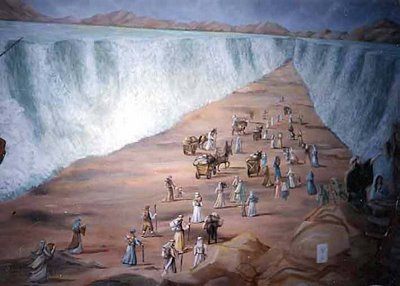
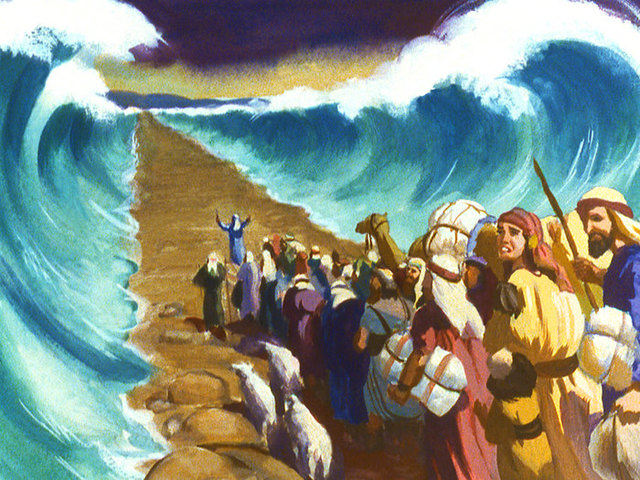
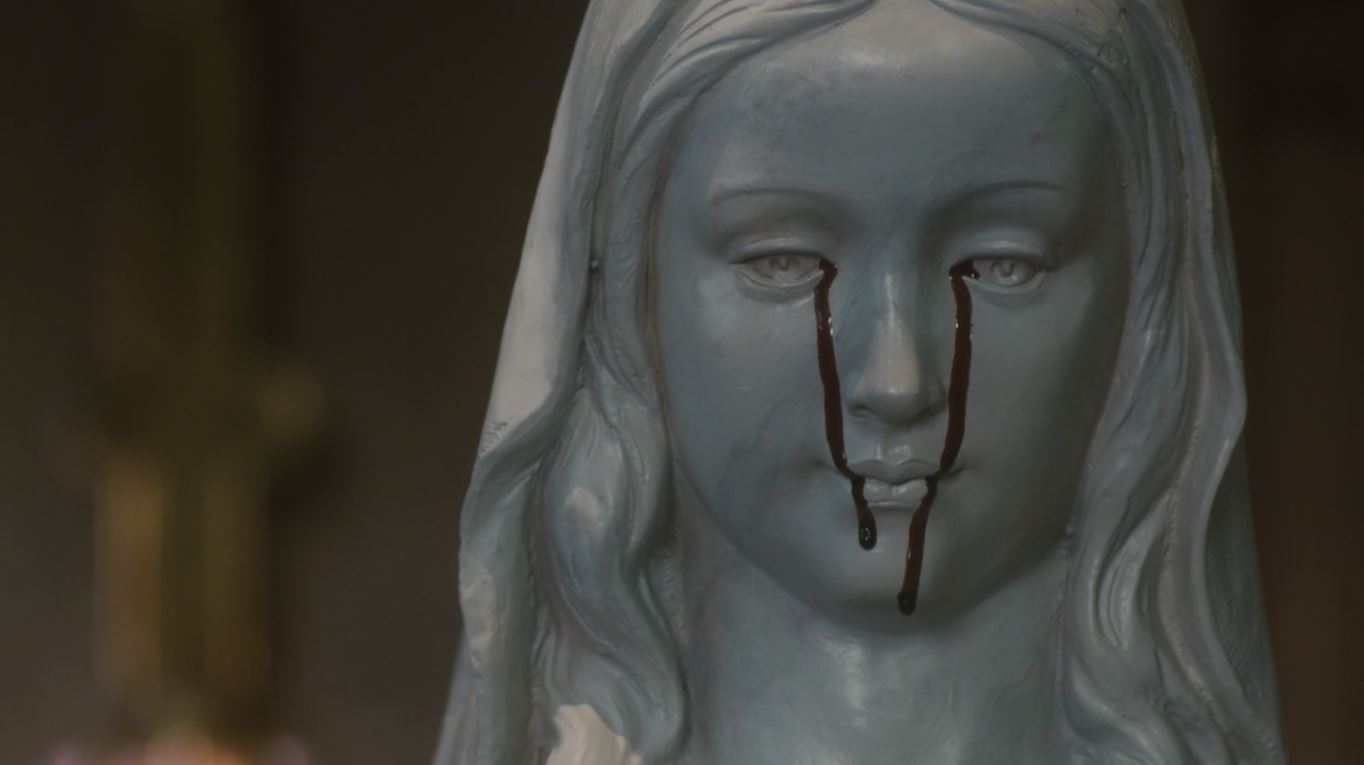
It is still a phenomenology because it is a descriptive mode of attuning closely to lived experiencie. Its a post-human one though because it seeks to partially trouble the waters of european humanism and its habits and understandings of embodiements
Astrida Neimanis:
As bodies of water we disrupt our own sense of embodied self all the time.
In the face of fear the welling up of water in our affective and visceralbodies can result in a sudden and unexpected elimination of tears or pee or shit and these eruptions might seem beyond the control of the disciplining processes to which we are normally subject as human selves... "excuse the outburst? we might say after we tearfully break down or we might consider these involuntary evacuations of water from outselves as a sign of animaly: "How unlinke me!" we might say apologything.
Oppresing thirst can similarly desorient us and disorient the sense of our organized human selves. Thirst can distract me and diffract me and i lose my focus and cant concentrate on the words on the page or keep my thoughts trained, my throat searches for a little bit of saliva and i keep trying to swallow and this is distracting. we know that in extreme dehydration the sense of body can altogether recede and we edge towards a dessicated sort of fair life. In cases where i pass my water on deliberately or intentionally i might wonder or what meaning mi am passing on along with it.
These disolutions of myself into and as the watery world might sort of rest below or beyond my direct and eimmediate sense of self but they extend my body into a more expanded sense of self.
But are these kinf of eliminations or transfers or floods something other that me ? We could call there experiences a kind of "more-than-human-embodiement". They do interrupt a comfortable human sense of bodily self and they amplify our very human vulnerabilities. so in this sense the're all the more human. But in opening up to these inundations that are also animal and elemental we're reminded that our humanness is always more that the bounds of our skin. By turning and paying attention to there disruptions we attune ourselves empathically towards other bodies of wateer beyond us.
In these instances one's watery bodiedness spills beyond the discrete comfort of the human and in doing so re-emphasizes the flimsy membrane that just barely holds this conceit together the idea of a body but which is patrolled and disciplined all the more for it.
Feminist post-human figuration: more than humaness empathetic bodies
The phenomenology of perception. Maurice Merleau-Ponty:
A proximal distance: the specific distance between the perciever and what she percieves such that an optimal tension is created between the inner horizon of the self and the outer horizon of the thing.
This proximal distance reveals the thing in its so-called essence. To increase or decrease the distance would mean that we begin to lose a comfortable grip on things. Like when we stay to far away froma painting of listeting to music with the volumen too low.
This proximal distance is expressing a zone of relation between a body and a thing that allows the various interpretive capacities of our bodies to remain optimally held together. We cohere when we exprience the world at a proximal distance. Proximal distance facilitates this cohesion and organization not just the things in the world as they appear to us but of our own bodies as well.
Steven Hall
Cuestiones de percepcion. Fenomenologia de la arquitectura
Kali. 1710. Watercolor
Painting, in opaque watercolour on paper, Kali, the Great Goddess, is shown here triumphantly seated on Shiva. She is dark-skinned, four-armed and wears a golden crown. On either side, female devotees. To the right, the four-headed Brahma in a dark red dhoti and to the left Vishnu in a dark yellow dhoti. Strewn around are eight corpses about to be devoured by jackals and vultures. The background is greyish-black.
Alfred Joseph Frueh to Giuliette Fanciulli
1913
1 letter : handwritten, ill. ; 18 x 11 cm.
Letter opens up into a little gallery of pictures. Meant to educate Ms. Fanciulli before visiting a gallery.
Frueh, Alfred Joseph, 1880-1968
Archives of American Art, Smithsonian Institution
Painting in opaque watercolour on paper, Matsya avatar, the fish (first) incarnation of Vishnu, is shown as the four-armed, blue-skinned god emerging from a fish's body. He is grabbing the demon Hayagriva by the hair, who is issuing from a white shell
Height: 216mm
Width: 157mm
O FANTASMA
Joao Pedro Rodrigues
Antropofagia
Canibalismo
Extractivismo
Imperialismo
Paternalismo
Sergei Eisenstein
Astrida Neimanis
Maurice Merleau-Ponty
drawing was almost a daily practice for Eisenstein, and it served many functions. Some were what we would think of as production design, especially for Ivan the Terrible. But drawing also provided recreation during long periods of enforced inactivity, and it could entertain and even instruct his filmmaking collaborators, especially during the isolation of shooting Ivan in Alma Ata. It could serve as analysis, when he was working on the essay on Disney, trying to understand ‘plasmaticness’ in Disney’s animals, and the peculiar power of the closed-line drawing. And, most intimately, it provided him with a technique of self-analysis. As Joan Neuberger has noted, Eisenstein was fascinated by duality. If there is a theme running through his many kinds of ‘free’ drawing, it is surely the refusal to accept binaries, stereotypes, taboos, and his ecstatic embrace of the polymorphous and the perverse. And of course his unquenchable, uninhibited sense of humour
Altar de Verdún
For the past seven years, Antoni has turned to dance and movement for her inspiration. She has engaged in several somatic movement practices to further her exploration into what it means to live from an embodied place. These new works emerge from her somatic revelations and her study of milagros, sculptural votive offerings used in latin cultures. Ranging from body parts to domestic objects, milagros are often hung in churches as symbols of things in life requiring prayer, healing and protection. Antoni’s milagros are prayers for embodiment.
In unusual meetings, Antoni grafts the inside of the body to the outside of the body to the environment of the body. Through these marriages, psychological space turns physical. These artworks depict an impossible touch made possible. The translucent objects are created with a purposeful erasure of detail, a memory half remembered.